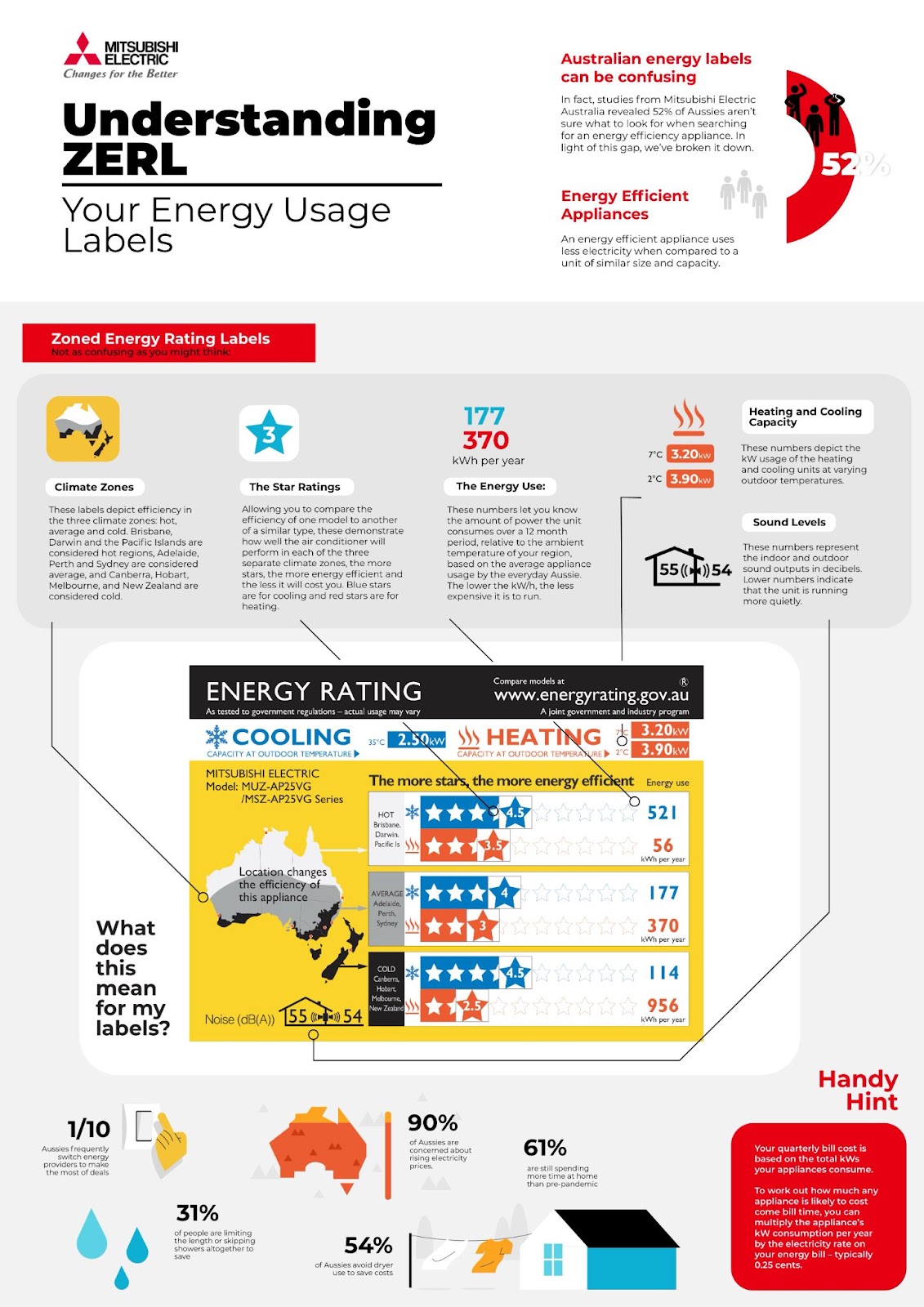Reverse cycle air conditioners are great for many reasons:
- The most energy efficient way to keep your house temperature comfortable,
- Capable of heating and cooling so you don’t spend money buying a separate heater,
- Use electricity which is either partly renewable (grid) or fully renewable if you have solar power like me so you can use your own free electricity generated from your roof.
A quote from the Federal government’s Energy department explains below why reverse cycle aircon’s are so efficient which means they use less electricity and save you lots of money. In comparison gas heaters, oil heaters and fan heaters are much more expensive to run as they are all less than 100% efficient.
Reverse-cycle air conditioning is 300–600% efficient, which means that it can take one unit of electrical energy and turn it into 3 to 6 times as much heating or cooling energy. Under mild conditions, some products can achieve efficiencies of over 1000%.
Split system air conditioners are made up of 2 units: an exterior compressor and an interior unit. The interior unit can either be non-ducted (such as a wall-mounted unit) or ducted in the roof cavity and connected to various points of the dwelling through ductwork. The 2 units are connected by pipes that carry refrigerant. Ducted systems are not as efficient as the wall units, because a larger fan is used and energy is lost through the ductwork.
Multi-split systems (2 or more interior units connected to one outside compressor) are also available.
A split system with an inverter (which adjusts compressor speed according to outside temperatures) can achieve 30% more operating efficiency than a conventional fixed speed model.
It’s important you buy the right reverse cycle aircon for your local city climate as well as the highest star rating you can afford.

This explanation of Zoned Energy Rating Labels (ZERL) will help you make the right aircon purchase choice:
- Ratings are up to a maximum of 10 stars for both heating and cooling.
- Labels on ducted systems are voluntary, so not all products will have one.
- Take into account the size of the space to be heated or cooled. Consider other aspects of the space the air conditioner will be placed in, such as the size and orientation of the windows, insulation in the home and shading of the windows and walls. Using a correctly sized unit will make heating and cooling more efficient, comfortable and affordable.
- Climate Zones depict efficiency in the three climate zones: hot, average and cold. Brisbane, Darwin and the Pacific Islands are considered hot regions, Adelaide, Perth and Sydney are considered average, and Canberra, Hobart, Melbourne, and New Zealand are considered cold.
- The Energy Use lets you know the amount of power the unit consumes over a 12 month period, relative to the ambient temperature of your region, based on the average appliance usage by the everyday Aussie.
- The Star Ratings compare the efficiency of one model to another of a similar type, these demonstrate how well the air conditioner will perform in each of the three separate climate zones, the more stars, the more energy efficient and the less it will cost you.
- The house icon on the bottom of the label indicates how much noise the air conditioners will make when operating at full power. For air conditioners with both internal and external components, such as a split system, there are separate inside and outside noise ratings. The noise level may be important, if the outdoor unit is near a window, bedrooms or close to a neighbour’s house (particularly in a body corporate situation, where there may be specific requirements).
- Heating and Cooling Capacity depicts the kW usage of the heating and cooling units at varying outdoor temperatures.

Leave a Reply